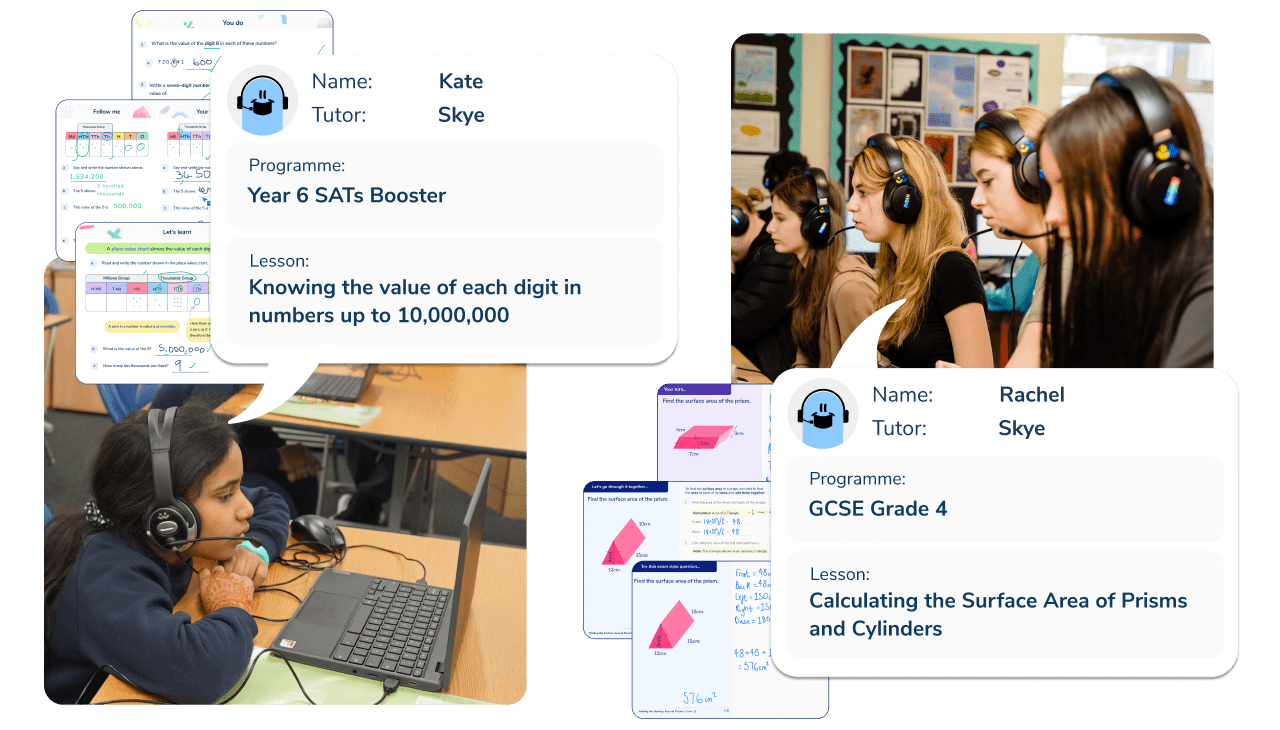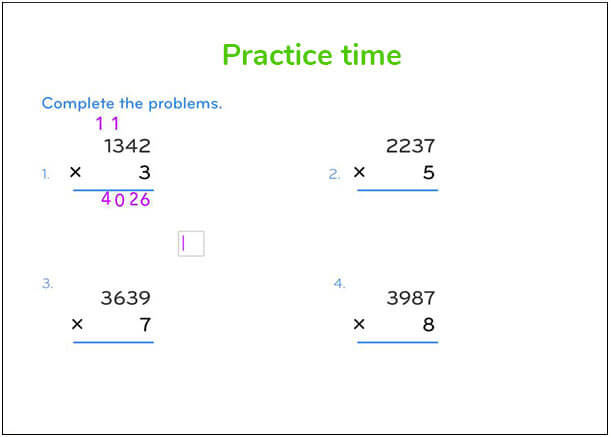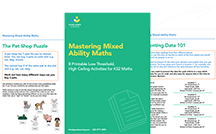Teaching ‘Low Ability’ Students Maths: “Are We Bottom Set?”
Teaching maths to the children some schools still call the ‘low ability students’ you will at some point hear the question “Miss, are we bottom set?”
The question is usually quickly followed by other questions such as “how do I move up a set?” and “why is this group so small?”
Regardless of your views on teaching strategies such as setting or mixed ability grouping, one day, you may be once again faced with teaching ‘bottom set maths’. While ability based setting is more common at secondary school, it is also occasionally used in primary schools, particularly in the lead up to standardised exams.
Even from a young age pupils show an awareness of the stigma of being placed in sets, and our free Primary School Guide to Pupil Premium emphasises The Education Endowment’s and the Sutton Trust’s findings that grouping students in sets actually has a detrimental effect on lower ability students and reduces progress by 1 month. In fact, in Finland, sorting children into ability groups is illegal.
In this article we set out some of the challenges of labelling students bottom set and how to overcome them when you’re teaching primary maths.
Challenges of teaching low ability students maths
Motivation
The main challenge with these bottom set Maths lower ability learners throughout the year can be to ensure that they remained motivated. This can be especially prominent if they are working towards separate goals to other pupils in their year group and are seated away from the other pupils; this contributes towards the feeling of demoralisation and segregation and teachers are left to convince these pupils that the effort they put into maths is worthwhile.
Bringing the principles of a growth mindset into your classroom can help frame problems as ‘something you can’t solve yet‘.
I also recommend exploring whether some classroom metacognition strategies can help to develop low ability students’ own sense of self, their understanding of how they learn their ability to take responsibility for their learning.
Context
If pupils don’t believe that what they are learning is useful in some way, they will be unable to engage with the mathematical content. This is particularly pertinent when you’re teaching bottom set Maths.
It’s therefore vital that pupils are given a range of KS2 maths problem solving investigations on how the lesson fits into their long term progression, and questioning in the classroom strategies are used to highlight how exactly the topic being learnt is useful to them.
EAL pupils
A perhaps unexpected challenge that is prominent in many of the schools we work with at Third Space Learning is the growth of EAL (English as an Additional Language) pupils.
The fact that these pupils may be placed in the bottom set for Maths does not necessarily reflect their mathematical ability. They should be given work that is challenging them mathematically whilst ensuring that key words and phrases are understood before embarking on tasks.

Meet Skye, the voice-based AI tutor making maths success possible for every student.
Built by teachers and maths experts, Skye uses the same pedagogy, curriculum and lesson structure as our traditional tutoring.
But, with more flexibility and a lower cost, schools can scale online maths tutoring to support every student who needs it.
Watch Skye in actionMost effective strategies for teaching bottom set low-attaining groups
Understand the role memory function may play in their lower attainment
There are multiple reasons for pupils in the ‘bottom set’ to be lower attaining aside from the obvious fact that they know they’re bottom set or see themselves as low ability.
Often these aren’t issues you can solve yourself, but a knowledge of how cognition is affected by memory, and how a strong or weak working memory can impact learning is key.
This is especially relevant in maths teaching where a student may have to hold multiple pieces of information in their head at once. With a poor working memory this is likely to overwhelm them and hinder their progress.
There are things you can do to develop or free up your working memory – one of the easiest, is consigning some facts, times tables for example, to your long term memory. Simple steps like these can really help.
See below for more articles covering similar issues from cognitive science that affect teaching:
- Learning and memory in the classroom
- Cognitive load theory in the classroom
- Direct instruction and worked examples
- Focused thinking and goal free problems
- The 5 stages of deliberate practice in education
- Critical thinking skills and problem solving activities in KS2
- How retrieval practice helps long-term maths skills
Include higher ability questions in their learning
For higher achieving pupils in the group, giving them the chance to consolidate and test their skills is key to ensuring that they remain motivated. Low threshold high ceiling questions are the holy grail when teaching bottom set maths.
Mastering Mixed Ability Maths Resource
8 Printable Low Threshold, High Ceiling Activities for KS2 Maths
Download Free Now!Some pupils may also enjoy creating and setting their own questions for other pupils based on the topic. By creating differentiated questions the pupils can engage with the content in a different way, and also have the confidence boost of helping others to get to the answers their questions.
Scaffold their work
One of the factors inhibiting progress within and between lessons for these pupils is often memory recall. Even if they can complete each step individually, many find it difficult to remember multi-step methods when solving problems.
Therefore, to prevent the pupils from becoming demotivated with these types of questions, teachers can provide a high level of scaffolding with strong differentiation in the classroom, that is then gradually removed. This allows pupils to answer these questions with minimal intervention from teachers, boosts pupils’ confidence and gives them practice in setting out questions correctly.
The aim by the end of the lesson should then be to answer these questions with no scaffolding in their books.

Scaffolding is an extremely versatile quality first teaching technique, and can be used to varying degrees with the whole class. Another benefit of this is that it allows for differentiation within the lesson; high ability pupils can be given less scaffolding earlier on, allowing them to work at a faster rate.
Mark their own work
Due to the nature of these groups, many of these pupils need high levels of assistance, intervention and access to teaching assistants. Therefore, low-attaining pupils can really enjoy being given autonomy and independence in lessons.
A strategy that pupils respond particularly positively to is marking their own questions from a simple and accessible mark scheme. This activity gives them ownership over their work, they can see directly where they have gained and lost marks and where the marks are available for each question.
This also allows the low-attaining pupils to realise that they can not only gain marks at the beginning of maths papers but also for at least attempting harder questions and scoring marks for their working out.
Read more: How to reduce GCSE exam anxiety
Do you agree with sorting children into ability classes? What strategies have you used to motivate and support low-attaining pupils?
DO YOU HAVE STUDENTS WHO NEED MORE SUPPORT IN MATHS?
Skye – our AI maths tutor built by teachers – gives students personalised one-to-one lessons that address learning gaps and build confidence.
Since 2013 we’ve taught over 2 million hours of maths lessons to more than 170,000 students to help them become fluent, able mathematicians.
Explore our AI maths tutoring or find out about an online maths tutor for your school.






